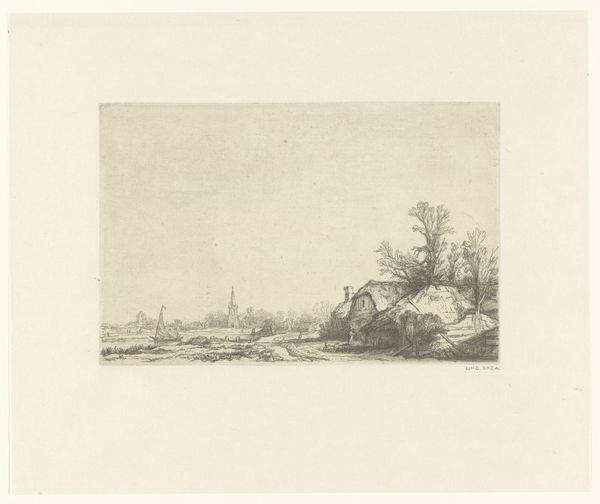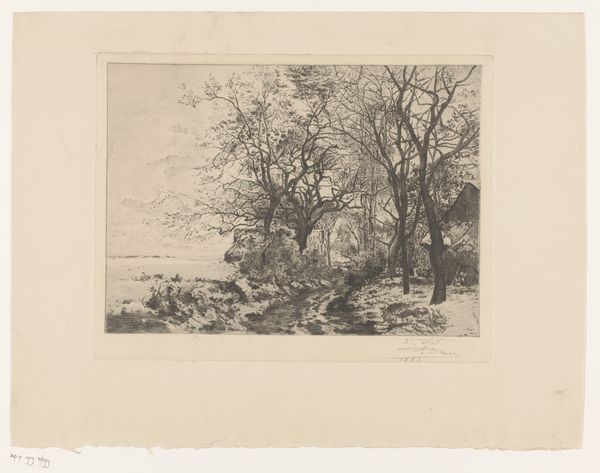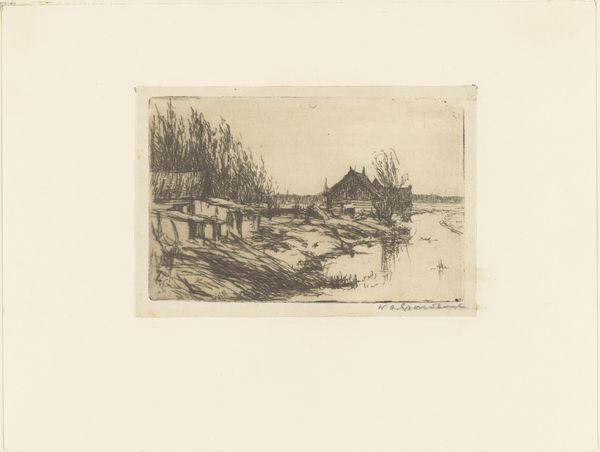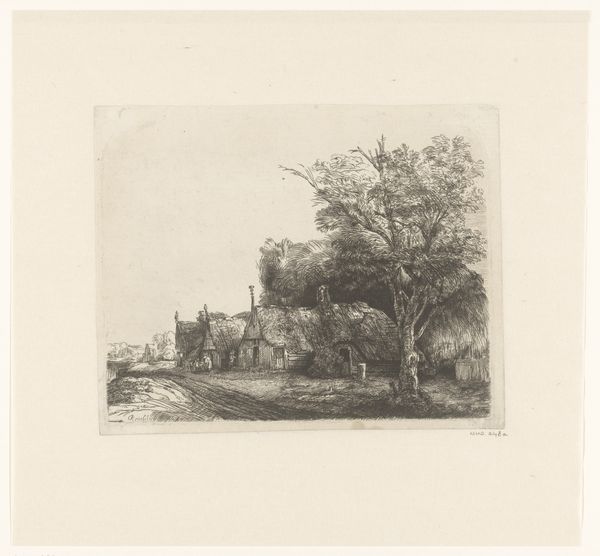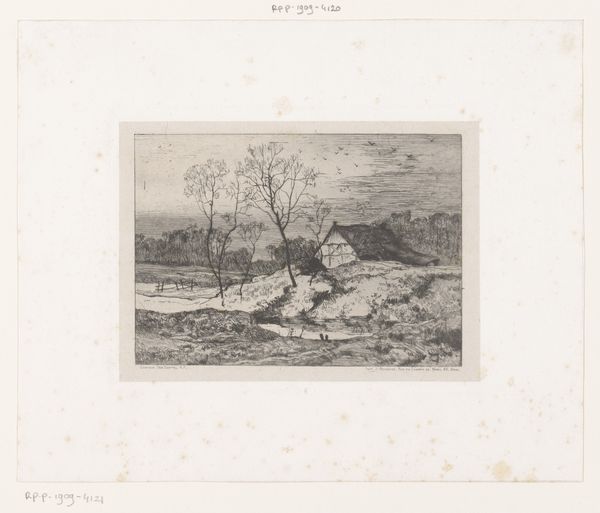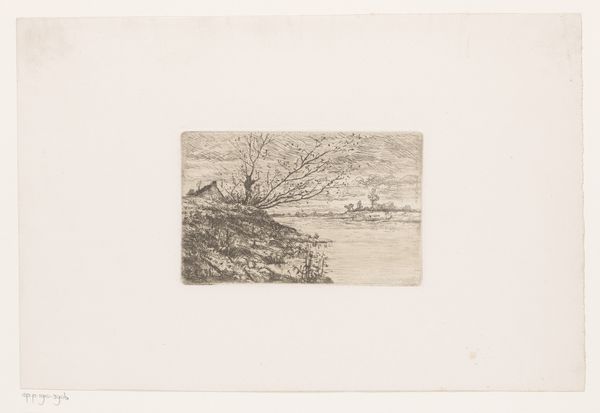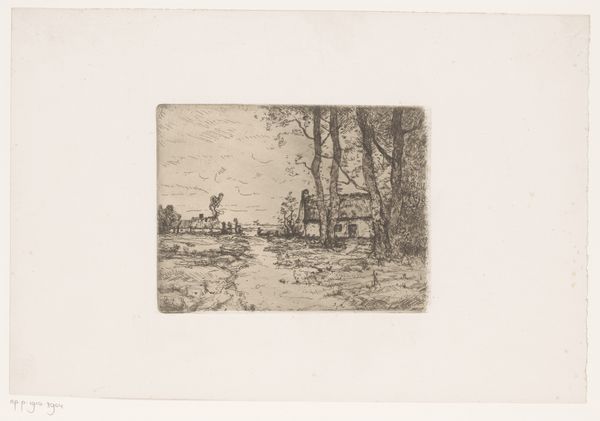
drawing, print, etching
#
drawing
#
dutch-golden-age
# print
#
etching
#
landscape
#
line
#
realism
Dimensions: height 107 mm, width 201 mm
Copyright: Rijks Museum: Open Domain
Editor: So, this etching by William Young Ottley, titled "Cottage beside a canal with a view of Ouderkerk," created sometime between 1781 and 1836... It has a delicate feel to it. The lines are so fine, and the landscape has this quiet, almost melancholic mood. What jumps out at you? Curator: It's intriguing how seemingly simple images carry such powerful cultural weight, isn't it? This landscape, rendered with such fine lines, it speaks to a specific yearning within the Dutch psyche – a return to simpler times, perhaps? Canal scenes are recurring motifs – tell me, what associations do waterways and buildings conjure for you? Editor: Hmm... Well, I suppose canals represent trade and connection, while the cottage suggests domesticity and a sense of place. Maybe a longing for the familiar in a rapidly changing world? Curator: Precisely! And notice the church spire in the distance – a symbol of faith, community, tradition, all held together by memory. Consider the implications. Why select a church? Why frame the building like that? Editor: I guess placing it in the background suggests the traditions and values are further removed from immediate experience... fading, but still present? Curator: A delicate balancing act, isn’t it? The artist invites us to consider our relationship to these enduring symbols and their psychological resonance. Ottley shows us memory as a construction of light and line. We, in turn, build it into meaning. What an interesting reminder that visual art creates collective and personal significance, then, and even now. Editor: This has given me so much to think about – the subtle power of everyday images and the cultural narratives they carry. Thank you!
Comments
No comments
Be the first to comment and join the conversation on the ultimate creative platform.
